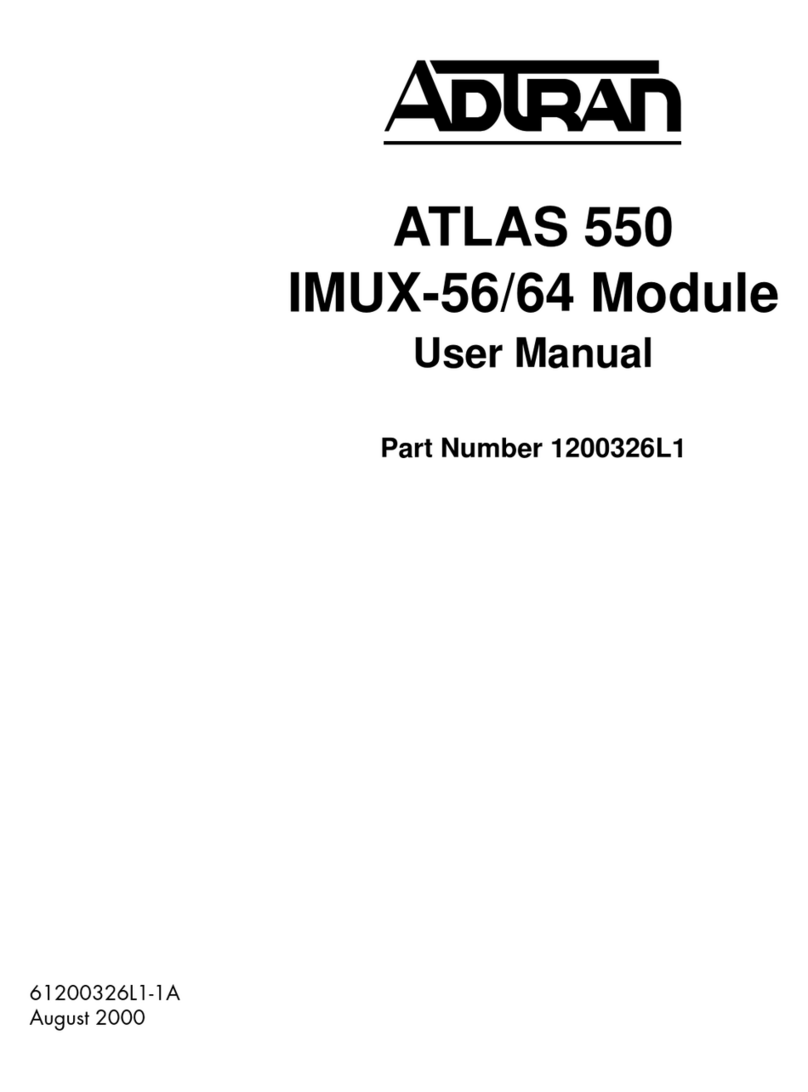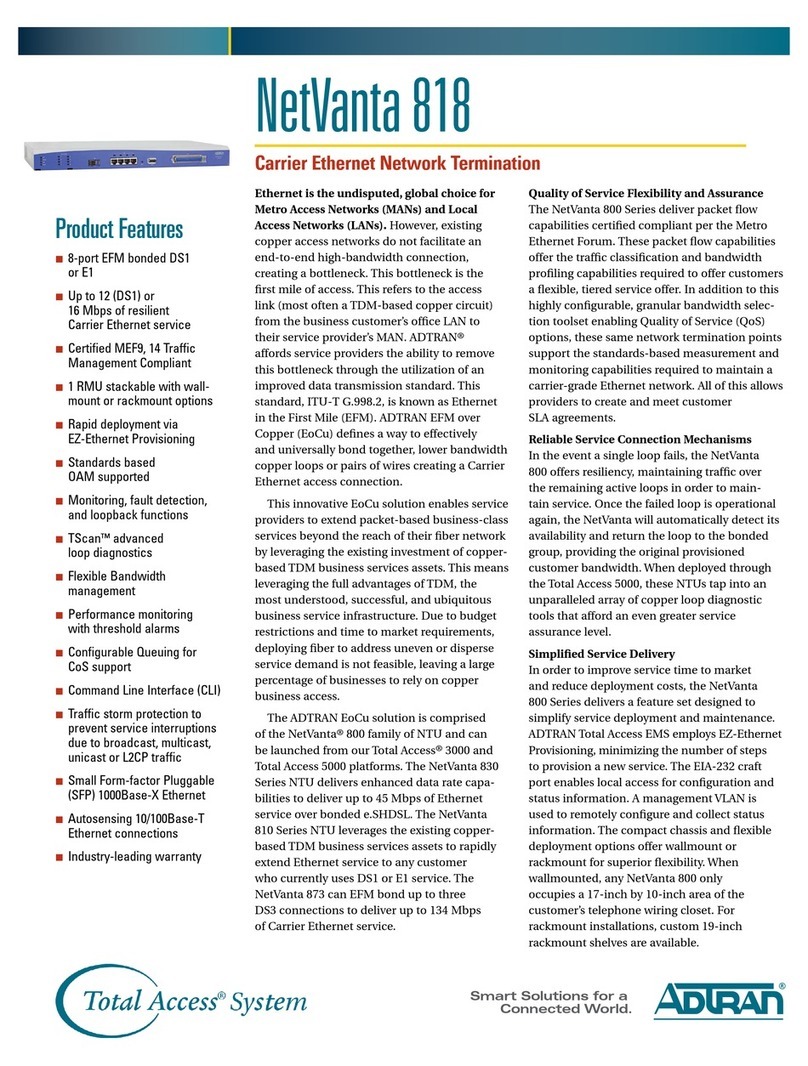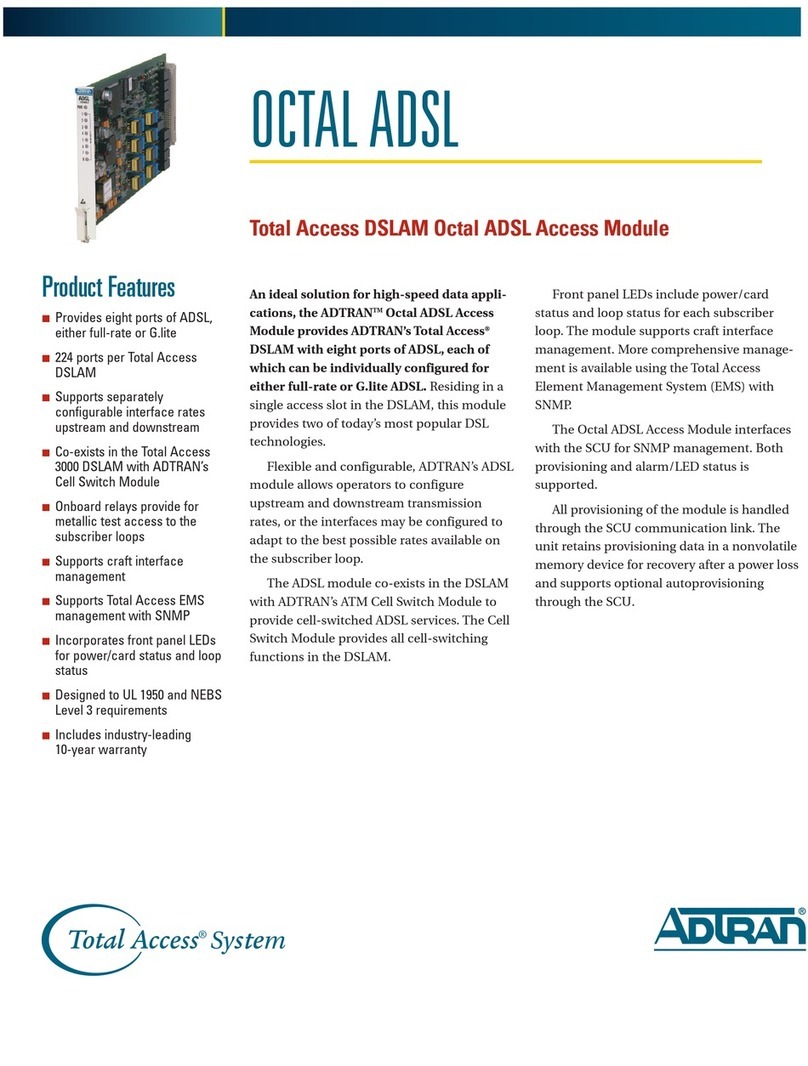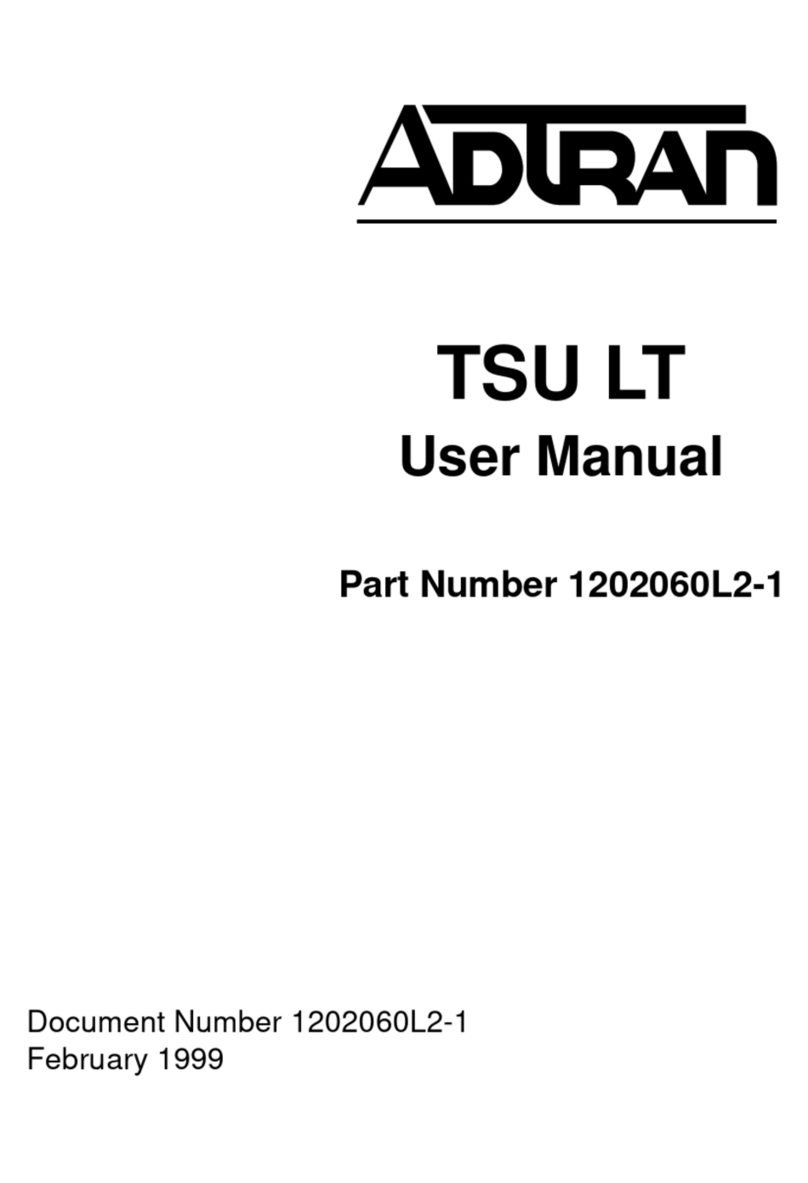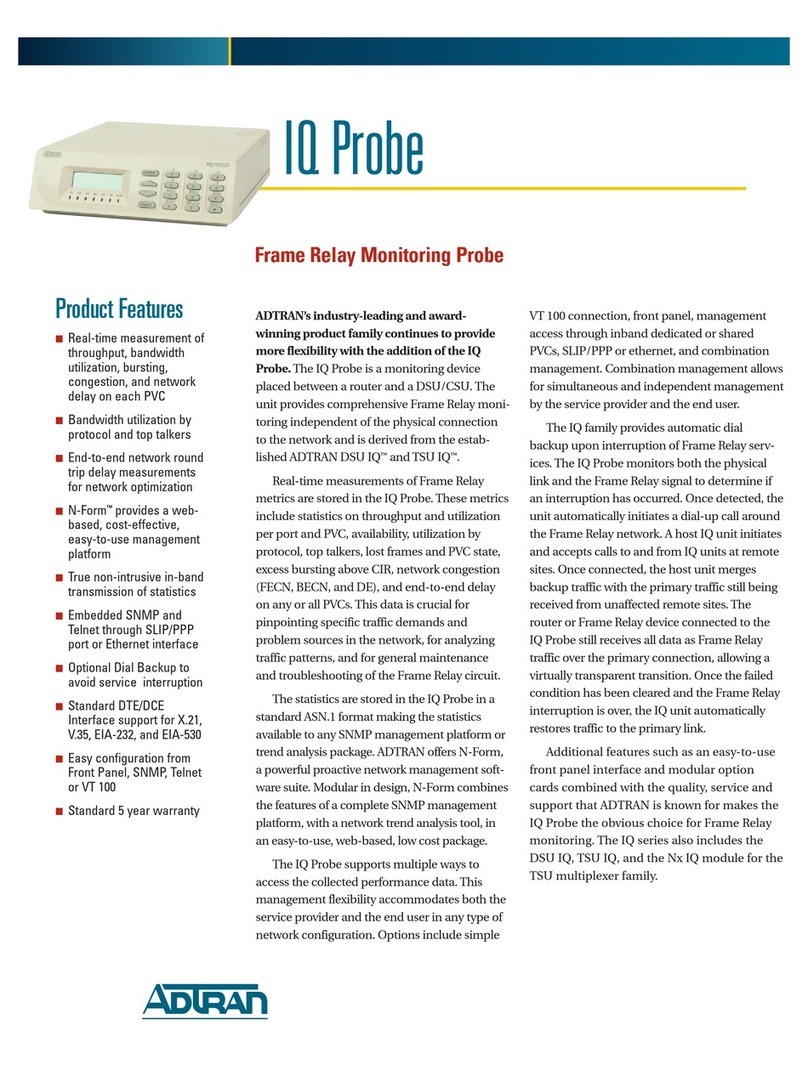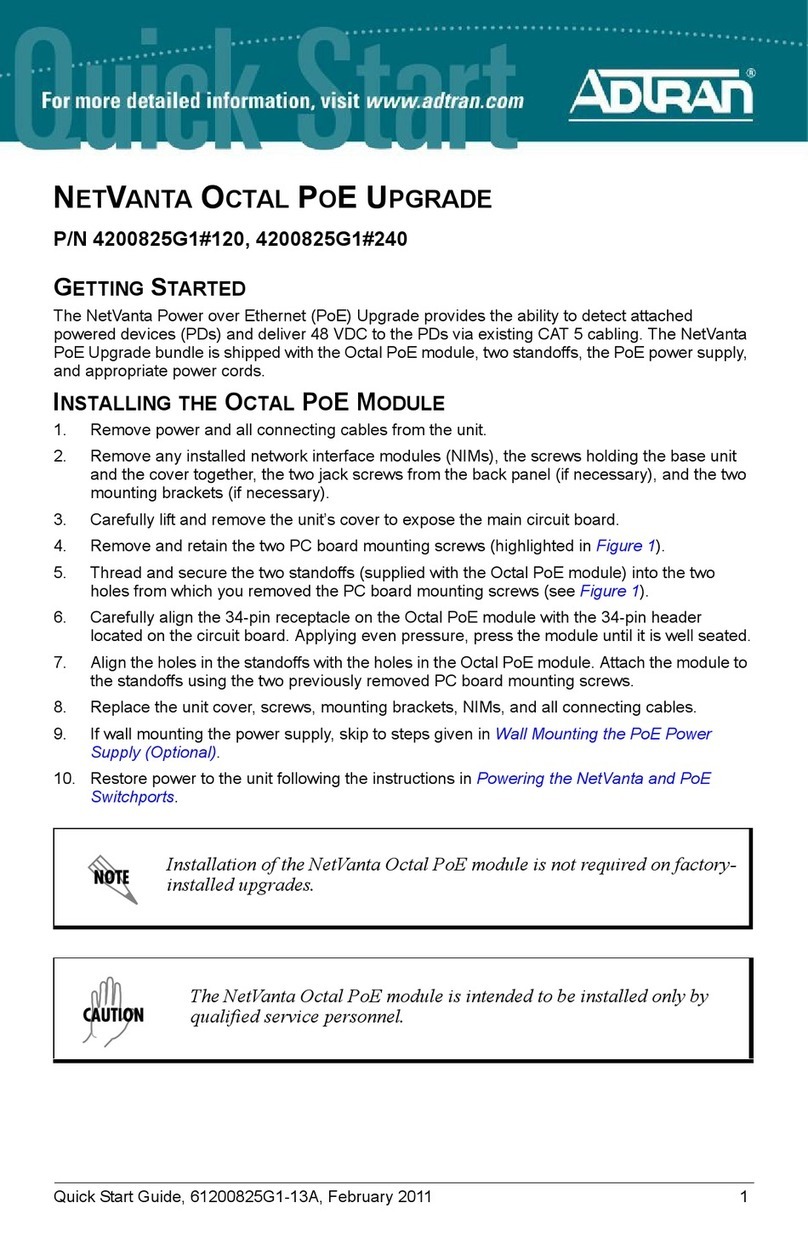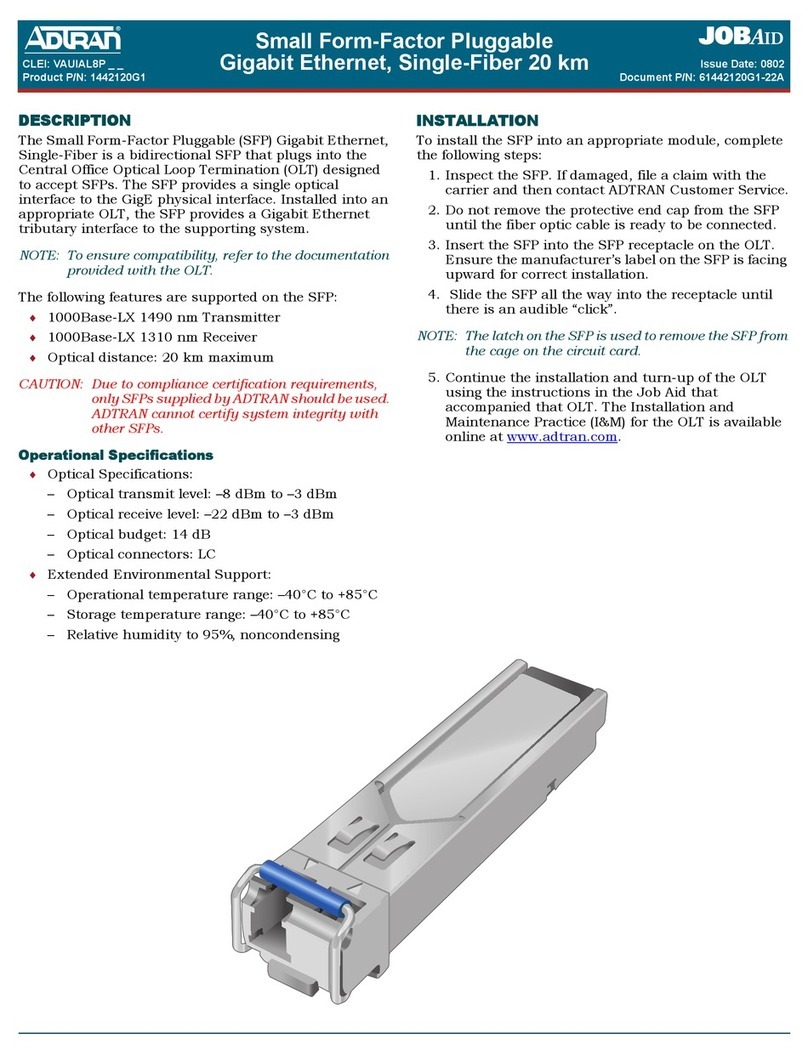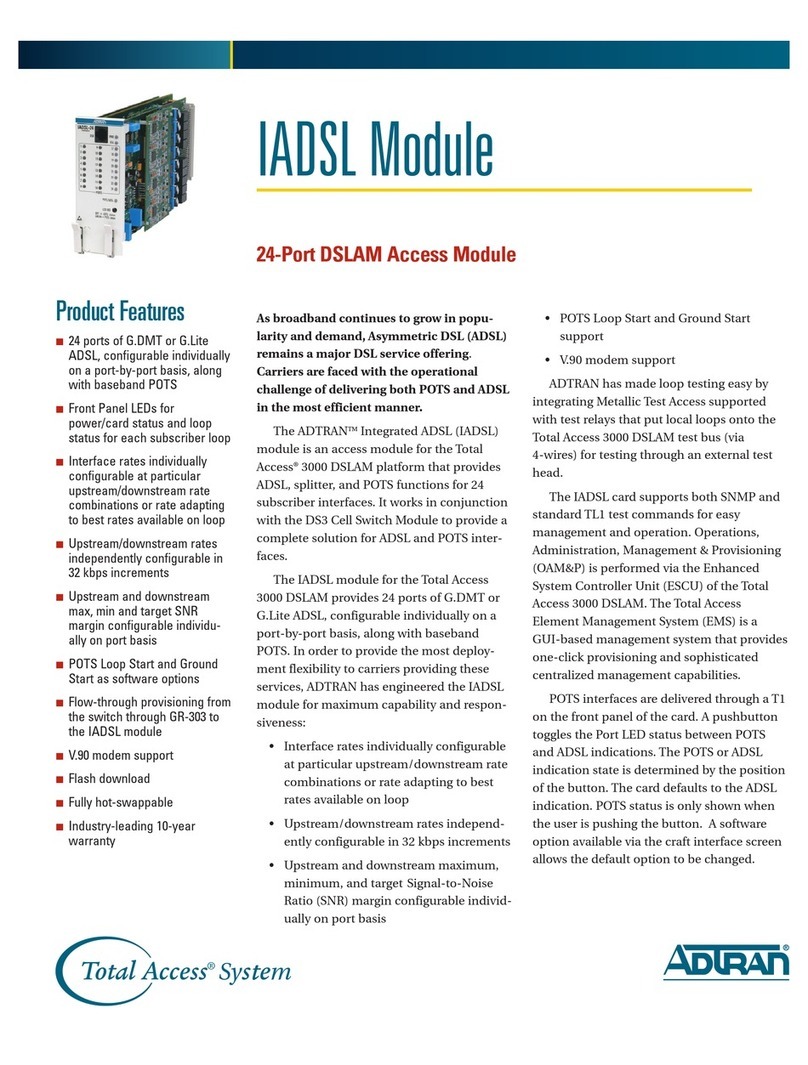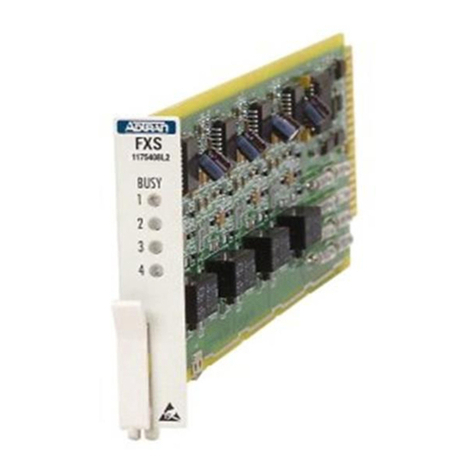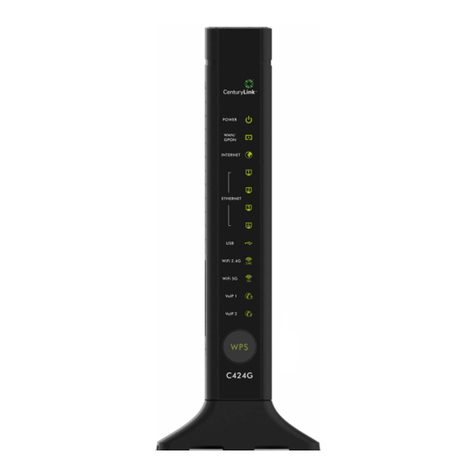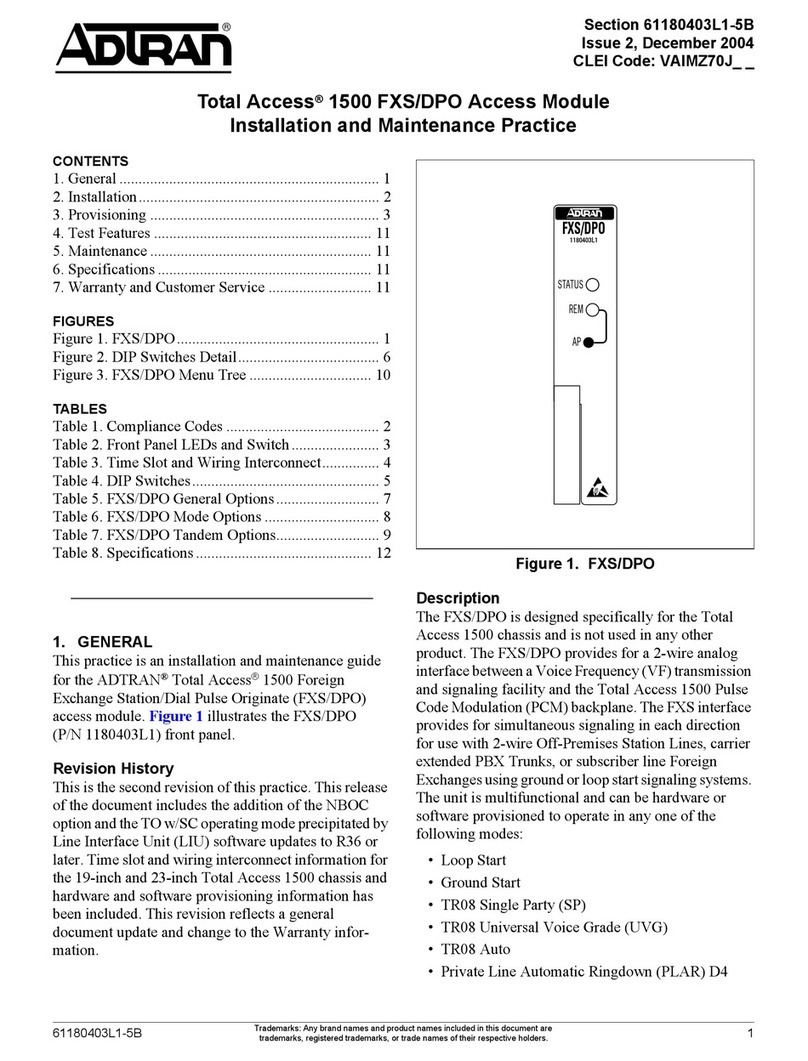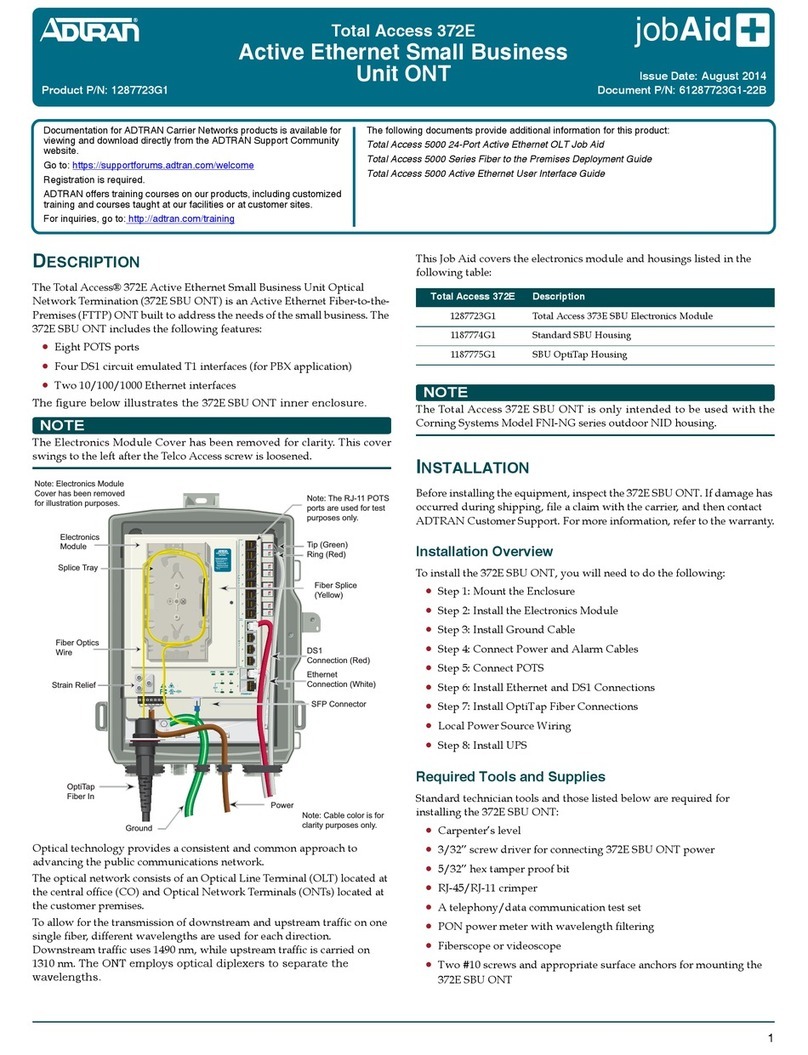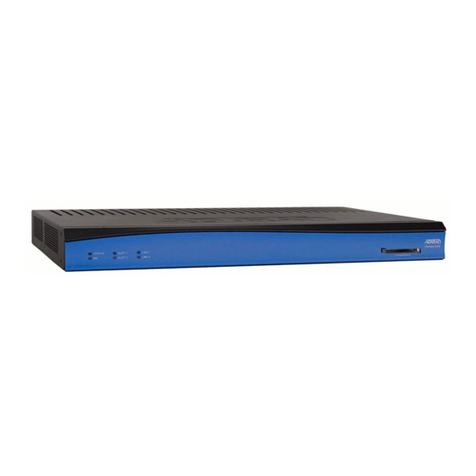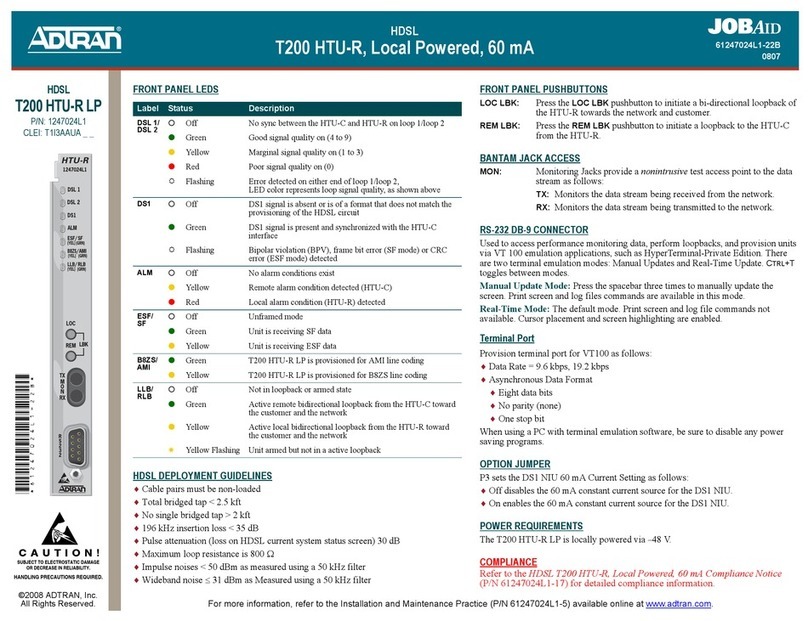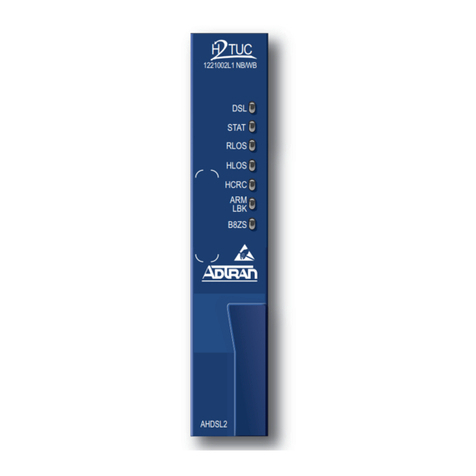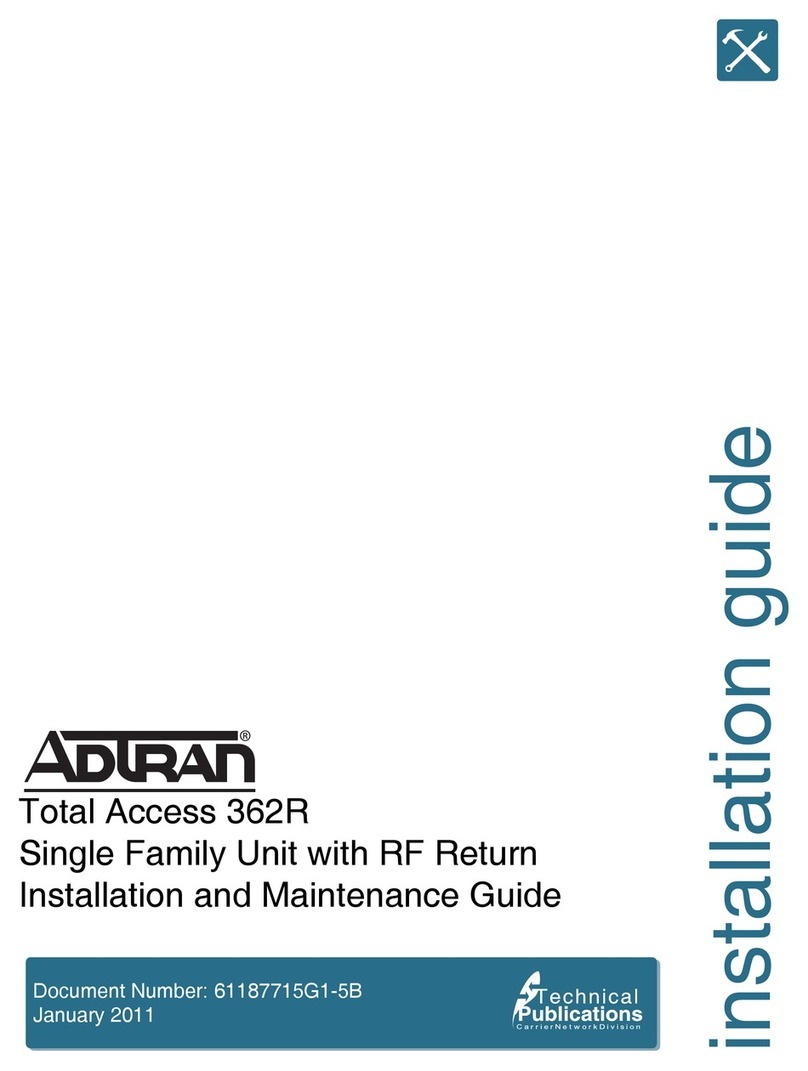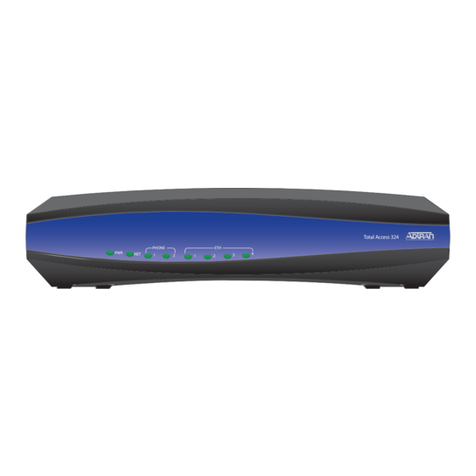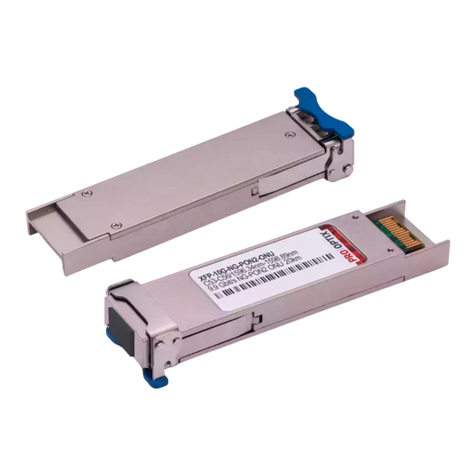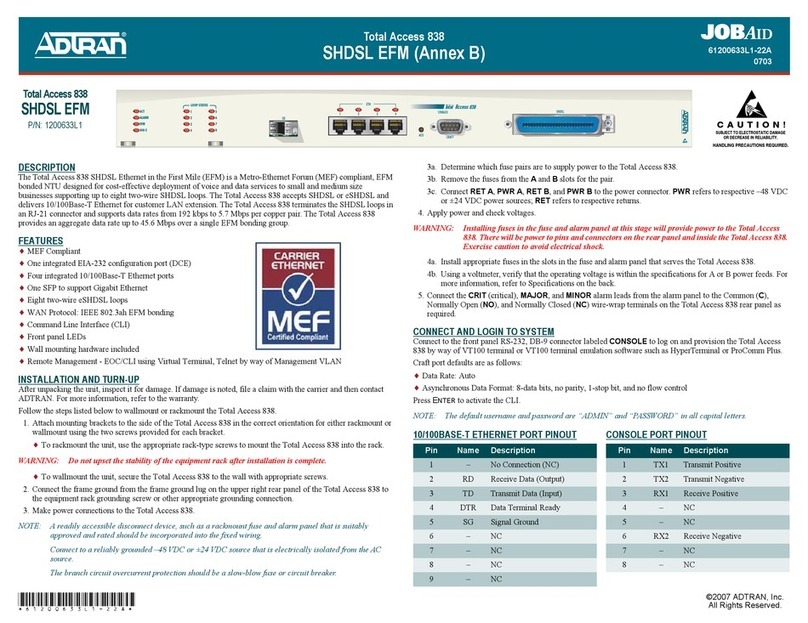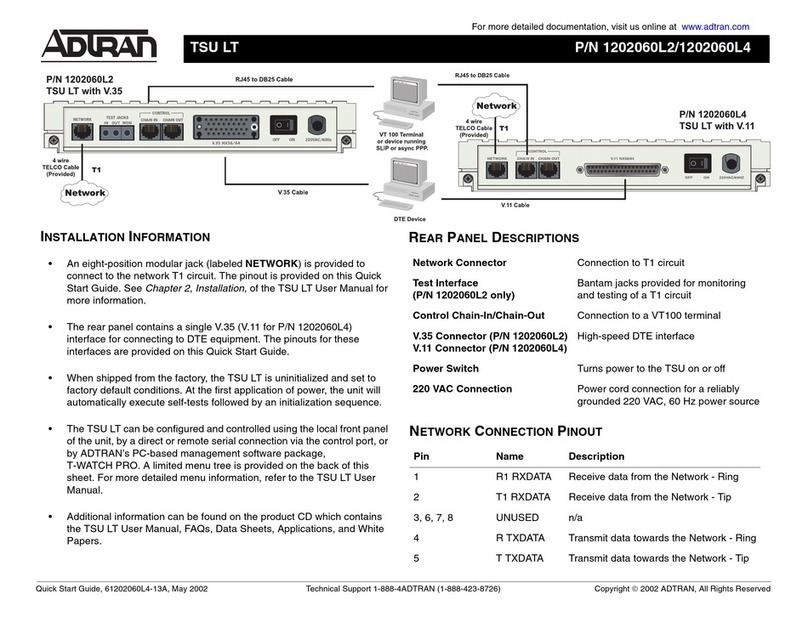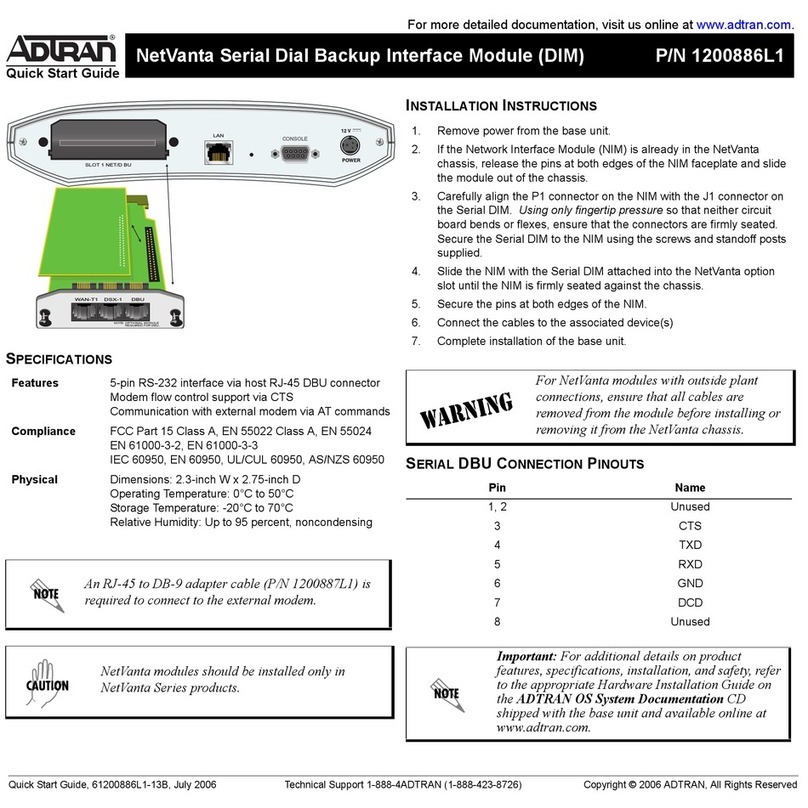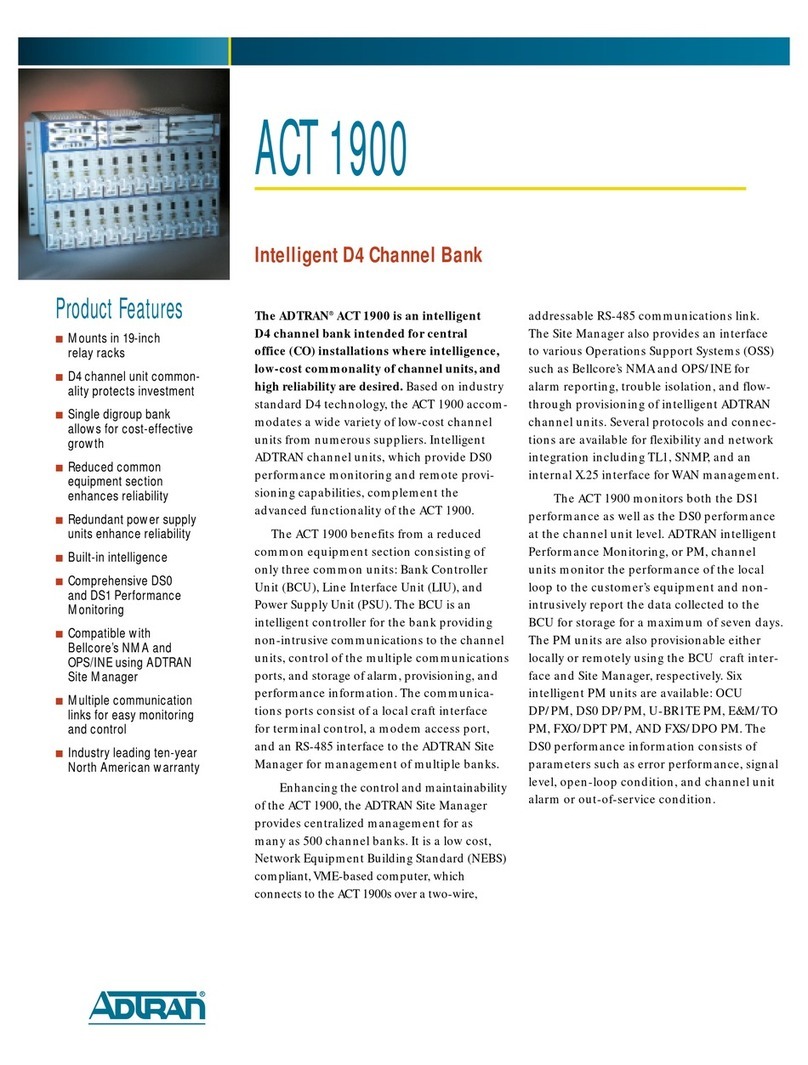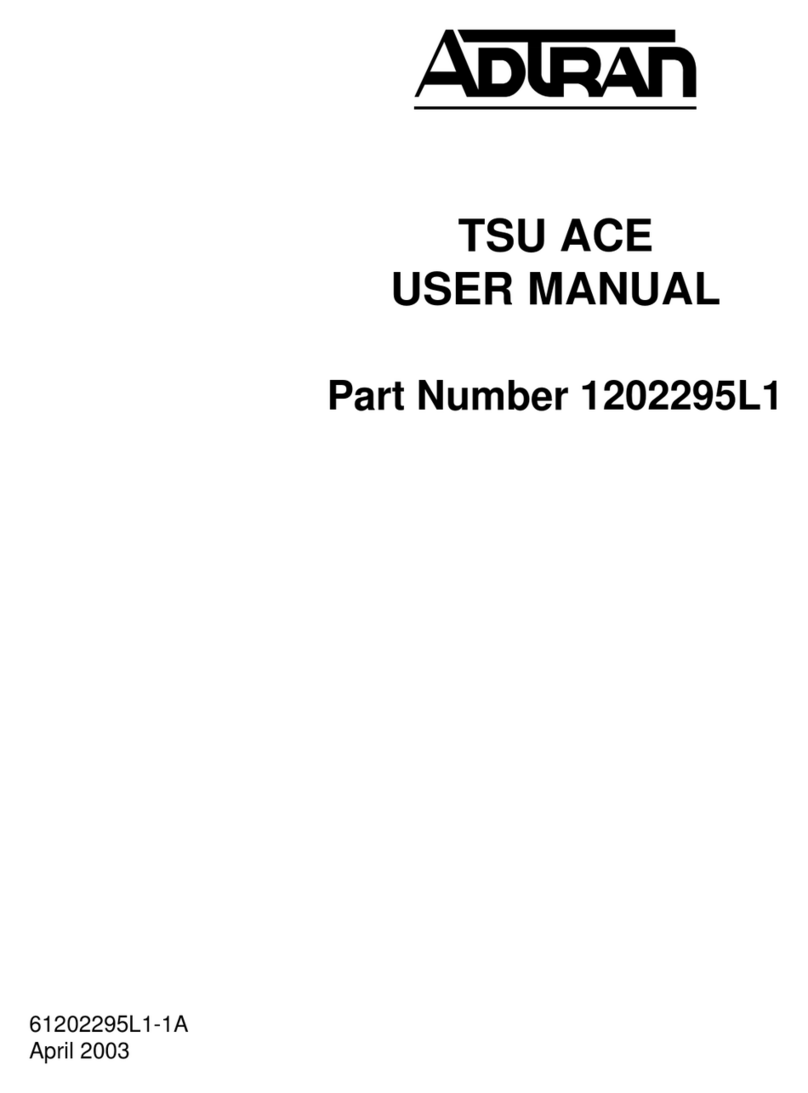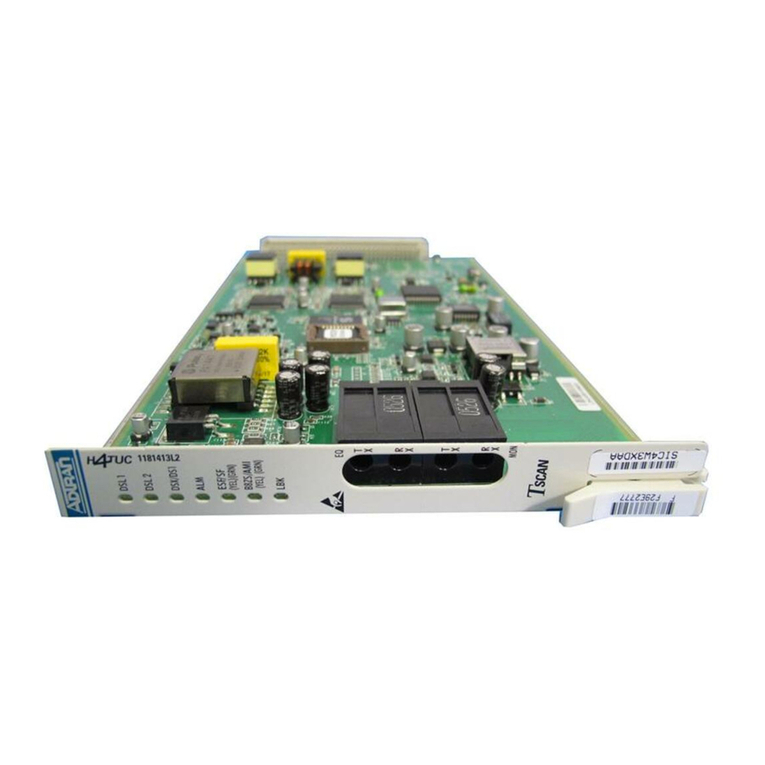
Physical Specifications
Front Panel Interfaces
■Four 10/100/1000 BaseT Ethernet interface via RJ-45
■Four Gigabit Ethernet interface via SFP cages,
angled to reduce overall product depth and
improve cable management
■All Ethernet ports may be used for either network
WAN or customer-side LAN connections
■100BaseX SFP also supported to allow Fast Ethernet
fiber lease
■Ethernet faceplate ports support either 1Gbps or
2.5 Gbps ITU-T G.8032 Ethernet Ring Protection
Switching (ERPS)
■Optional ERPS optical bypass switch connector
provided to protect ring from NetVanta 8044M NTE
power failure. (future hardware)
■DB9 local craft port for support of RS-232 interface
for local management
■Two expansion access/service module slots
(see next sub-sections for options)
■Field replaceable fan module (may be required to
support future expansion modules)
Physical Dimensions
■Desk, rack and wall mountable
■Rack mountable solution in 19” or 23” wide
telecom racks
■Height: 1.7 inches (44mm) (1 RU)
■Width: 17.2 inches (437mm) or 19.0 inches (483mm)
(with mounting brackets)
■Depth: 10.7 inches (273 mm) IEC compliant with fiber
bend radius included
■Weight: 6 lbs (2.7 kg) with empty slots 8 lbs (3.6 kg)
with both module slots and fan tray installed
Power Supply, Power Consumption,
Heat Dissipation
■Redundant, Dual A and B fed +/- 24/-48 VDC version
(P/N 1174801G1)
■Ground/Earth provided via Post and Lug type connector
■Typical power consumption is 31W maximum without
additional modules nor fan tray installed
■Maximum power consumption is 37W without
additional modules nor fan tray installed
Operations and Maintenance
Environmental Hardening
■Operating Temperature: -40°C to 65 °C
■Storage Temperature: -40°C to 85 °C
■Relative Humidity: GR-63-CORE 5% to 95%,
non-condensing
■Operating altitude range
oAt 30°C: -197 to 13000 feet (-60 to 4000 meters)
oAt 40°C: -197 to 6000 feet (-60 to 1800 meters)
■Metallic interface voltage surge protection
and isolation
Ethernet Services Support
■Classification of Traffic based on:
oPer UNI port, CE VLAN ID (C-Tag) and/or CE VLAN
P-bits, Soure and/or destination MAC address,
DSCP fields
■Single stack VLAN and double stack VLANs (Q-in-Q)
oManipulation based on 802.1p and DSCP fields
oSTAG TPID provisioning supports 802.1ad and
802.1Q standards
oPort based service support
■Services Scale and Flexibility
oMEF 9, 14 compliant EPL, EVPL, ELAN, ETREE
o8 Queues, Strict Priority and/or Weighted
Fair Schedulers
oConfigurable EtherType and TPID for
service flexibility
oVLAN IDs 0 – 4095; EVC configurable in the
range of 2–4094
oConfigurable MTU from 1500 to 10k Jumbo
frame in four bytes increments
o16k active MAC address; Ability to disable
MAC learning (32k support future software)
oIngress policers (tr3CM), CIR and EIR settings
to 64 kbps granularity, Configurable Burst through
EBS, CBS settings
oEgress shaping per port (per port per queue
and per up to 16 VLAN groups in future)
Fault and Performance Management
■IEEE 802.3ah Link OAM
■IEEE 802.1ag Connectivity Fault Management (CFM)
■IETF TWAMP Layer 3 Performance Monitoring (PM)
(reflector)
■ITU-T Y.1731 Layer 2 Performance Monitoring
(sender and responder PM measurements are
accurate to sub millisecond levels)
■Supports customer viewable PM/SLA statistics
via Web portal
Security
■TACACS+ Authentication, Authorization
■RADUIS Authentication, Authorization
■SSHv1/v2 and SFTP
■SNMPv1/v2 (today), SNMPv3 (future software)
Carrier Ethernet Network Termination
NetVanta 8044M
